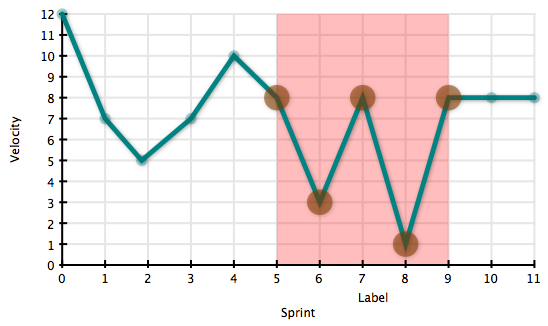The MagLev alpha was released recently. Before I get too far in to this post I need to make it clear that I’m not affiliated with the MagLev development team. I’m not really even much of a Ruby interpreter hacker. I’m a curious ruby developer that has heard some interesting things about the project and wanted to get it up and running now that it’s available. I decided to make this post because the install and setup procedure is anything but standard. It’s not complicated, just not what you normally would expect.
First lets get the code:
[sourcecode language=“bash”]
$ git clone git://github.com/MagLev/maglev.git
Initialized empty Git repository in /Users/rgarver/Sources/maglev/.git/
remote: Counting objects: 28955, done.
remote: Compressing objects: 100% (12671/12671), done.
remote: Total 28955 (delta 15669), reused 28427 (delta 15200)
Receiving objects: 100% (28955/28955), 14.97 MiB | 539 KiB/s, done.
Resolving deltas: 100% (15669/15669), done.
Checking out files: 100% (2180/2180), done.
Initialized empty Git repository in /Users/rgarver/Sources/maglev/.git/remote: Counting objects: 28955, done.remote: Compressing objects: 100% (12671/12671), done.remote: Total 28955 (delta 15669), reused 28427 (delta 15200)Receiving objects: 100% (28955/28955), 14.97 MiB | 539 KiB/s, done.Resolving deltas: 100% (15669/15669), done.Checking out files: 100% (2180/2180), done.
$ cd maglev
[/sourcecode]
Great, we have the code. Next step is to do a base install. This installs the base libraries and GemStone which is the fabled persistence layer that MagLev has integrated. GemStone is a object persistence layer originally built for Smalltalk. If you haven’t ever played with Smalltalk or some of the variants (eg: Squeak) I recommend it. It will turn your head upside down.
[sourcecode language=“bash”]
$ ./install.sh
[Info] Starting installation of MagLev-22578.MacOSX on sirius.local
Password:
Sat Nov 21 09:22:44 PST 2009
[Info] Setting up shared memory
Total memory available is 4096 MB
Max shared memory segment size is 4 MB
Max shared memory allowed is 4 MB
[Info] Increasing max shared memory segment size to 2048 MB
kern.sysv.shmmax: 4194304 -> 2147483648
[Info] Increasing max shared memory allowed to 2048 MB
kern.sysv.shmall: 1024 -> 524288
[Info] Adding the following section to /etc/sysctl.conf
- kern.sysv.shm* settings added by MagLev installation
kern.sysv.shmmax=2147483648
kern.sysv.shmall=524288
kern.sysv.shmmin=1
kern.sysv.shmmni=32
kern.sysv.shmseg=8
[Info] Setting up GemStone netldi service port
[Info] Adding "gs64ldi 51456/tcp" to /etc/services
[Info] Downloading GemStone archive using /opt/local/bin/wget
-2009-11-21 09:22:44- http://glass-downloads.gemstone.com/maglev/GemStone-22578.MacOSX.zip
Resolving glass-downloads.gemstone.com… 207.171.185.197
Connecting to glass-downloads.gemstone.com|207.171.185.197|:80… connected.
HTTP request sent, awaiting response… 200 OK
Length: 74858717 (71M) [application/zip]
Saving to: `GemStone-22578.MacOSX.zip’
100%==================>] 74,858,717 847K/s in 1m 45s
2009-11-21 09:24:32 (694 KB/s) – `GemStone-22578.MacOSX.zip’ saved [74858717/74858717]
[Info] Uncompressing GemStone archive into /Users/rgarver/Sources
[Info] Linking gemstone to /Users/rgarver/Sources/GemStone-22578.MacOSX
[Info] updating MSpec, RubySpec, and RBS submodules
Submodule ‘benchmark’ (git://github.com/acangiano/ruby-benchmark-suite.git) registered for path ‘benchmark’
Submodule ‘spec/mspec’ (git://github.com/rubyspec/mspec.git) registered for path ‘spec/mspec’
Submodule ‘spec/rubyspec’ (git://github.com/rubyspec/rubyspec.git) registered for path ‘spec/rubyspec’
Initialized empty Git repository in /Users/rgarver/Sources/maglev/benchmark/.git/
remote: Counting objects: 7332, done.
remote: Compressing objects: 100% (5521/5521), done.
remote: Total 7332 (delta 1595), reused 6917 (delta 1274)
Receiving objects: 100% (7332/7332), 9.90 MiB | 578 KiB/s, done.
Resolving deltas: 100% (1595/1595), done.
Submodule path ‘benchmark’: checked out ‘d807eea7f7b2f38240bc177a0c22e599081882ea’
Initialized empty Git repository in /Users/rgarver/Sources/maglev/spec/mspec/.git/
remote: Counting objects: 2745, done.
remote: Compressing objects: 100% (1080/1080), done.
remote: Total 2745 (delta 1848), reused 2484 (delta 1644)
Receiving objects: 100% (2745/2745), 378.57 KiB | 383 KiB/s, done.
Resolving deltas: 100% (1848/1848), done.
Submodule path ‘spec/mspec’: checked out ‘bcec47c70e0678a29fd0c1345358c4daf7b971a3’
Initialized empty Git repository in /Users/rgarver/Sources/maglev/spec/rubyspec/.git/
remote: Counting objects: 26787, done.
remote: Compressing objects: 100% (8705/8705), done.
remote: Total 26787 (delta 18332), reused 25672 (delta 17482)
Receiving objects: 100% (26787/26787), 3.71 MiB | 520 KiB/s, done.
Resolving deltas: 100% (18332/18332), done.
Submodule path ‘spec/rubyspec’: checked out ‘b0a18cf80dc706d39ee550831b8b941224b60fb6’
[Info] Creating new default ‘maglev’ repository
[Info] Generating the MagLev HTML documentation
[Info] Finished upgrade to MagLev-22578.MacOSX on sirius.local
[Info] MagLev version information:
maglev 0.6 (ruby 1.8.6) (2009-11-20 rev 22578-1067) [x86_64-linux]
GEMSTONE: 3.0.0 Build: 64bit-22578
MONTICELLO: MagLev-ao.1067.mcz
MAGLEV: commit e2a4fe2e0f7ca85cdcb141e6b56913eba802eefd
Author: Allen Otis <otisa@abaco.gemstone.com>
Date: Thu Nov 19 19:57:09 2009 -0800
[Info] GemStone version information:
GemStone/S 64 Bit
3.0.0 Build: 64bit-22578
Fri Nov 20 8:22:00 2009
[Info] Adding these to your .bashrc will make it easier to run MagLev
export MAGLEV_HOME=/Users/rgarver/Sources/maglev
export PATH=$MAGLEV_HOME/bin:$PATH
[Info] After you complete this upgrade and verify MagLev is working, run
rake stwrappers
to generate the .rb files for the GemStone/Smalltalk FFI
in MAGLEV_HOME/lib/ruby/site_ruby/1.8/smalltalk/
[/sourcecode]
As you can see on OS X it will build everything for 64bit which is pretty cool. It also downloaded a bunch of support libraries and updated all of the submodules. If you ever update the code locally you are supposed to run ‘$ ./update.sh’ to rebuild everything and get it all up and running.
Once you have it installed you should add the following lines to your .profile or .bashrc
[sourcecode language=“bash”]
export MAGLEV_HOME=/Users/rgarver/Sources/maglev
export PATH=$MAGLEV_HOME/bin:$PATH
[/sourcecode]
You’ll need to make sure you run those lines on the command line also. Once the environment is setup you can run ‘$ rake maglev:start’. This command apparently boots up the core MagLev engine.
[sourcecode language=“bash”]
$ rake maglev:start
(in /Users/rgarver/Sources/maglev)
startstone[Info]: Starting Stone repository monitor "maglev".
startstone[Info]: GemStone server ‘maglev’ has been started.
[/sourcecode]
Once that is started you are good to go:
[sourcecode language=“bash”]
$ maglev-irb
/Users/rgarver/.irbrc
error , no such file to load — readline,
during /Users/rgarver/Sources/maglev/lib/ruby/1.8/irb/completion.rb
error , no such file to load — readline,
during /Users/rgarver/.irbrc
irb(main):001:0> puts ‘hi’
hi
=> nil
irb(main):002:0>
[/sourcecode]
